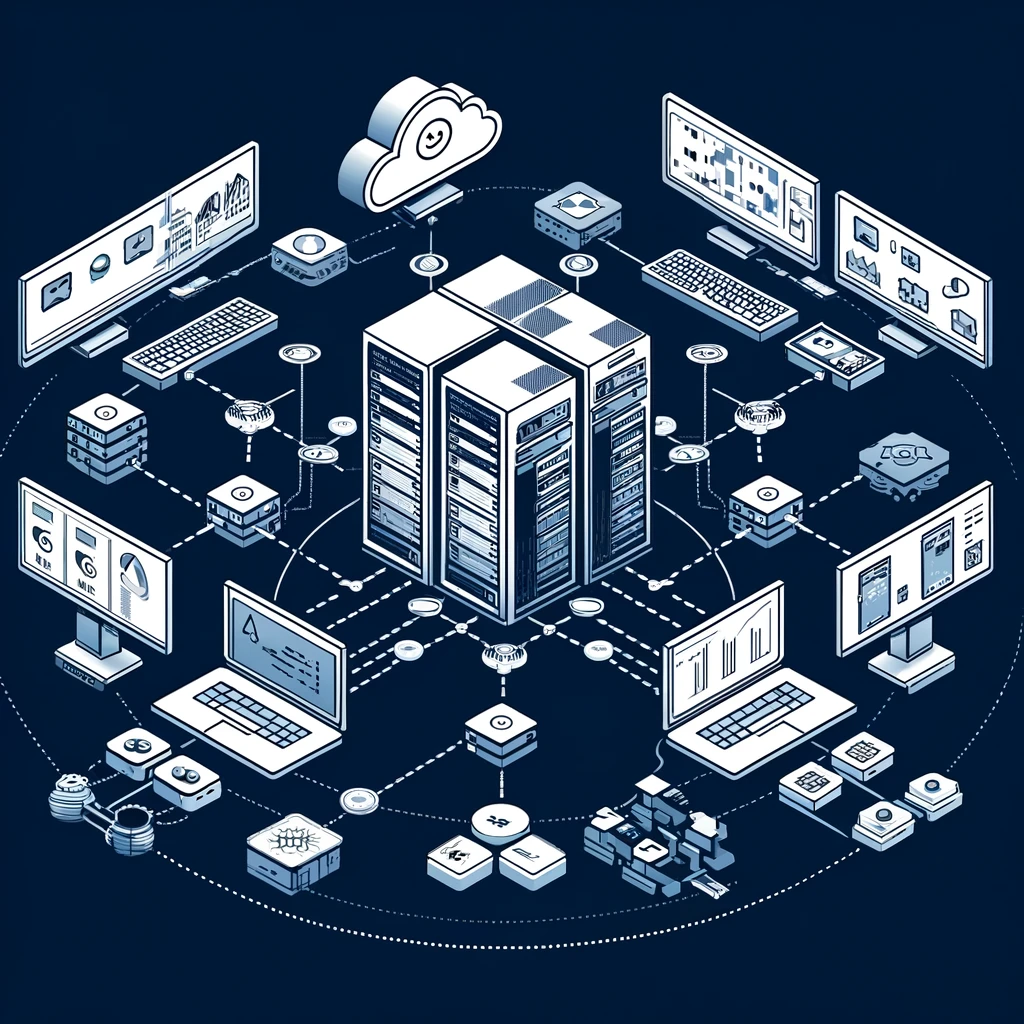The modern digital landscape is constantly evolving, driven by the ceaseless innovation and the unending quest to maximize efficiency in technology infrastructures. Among the most transformative advancements in recent years is the rise of virtual data centers (VDCs). These virtual environments replicate the features and functionality of traditional physical data centers but do so in a purely digital format, offering remarkable flexibility, scalability, and cost-efficiency. This article delves into what virtual data centers are, how they work, and why they are becoming indispensable in the world of cloud computing.
What is a Virtual Data Center?
A virtual data center is an aggregation of cloud-based resources that provides organizations with virtualized network solutions. Unlike physical data centers, which require extensive hardware setups, VDCs operate in a completely virtualized environment. This setup not only reduces physical infrastructure costs but also provides businesses with the agility to adapt to changing technological landscapes.
The Structure of a Virtual Data Center
Understanding the structure of a virtual data center is crucial to appreciating its complexity and efficacy. Typically, a VDC includes virtual machines (VMs), virtual networks, and storage capabilities. These elements are managed via a central management software that allows IT administrators to allocate resources based on demand.
Core Components of a Virtual Data Center
- Virtual Machines (VMs): Virtual machines are the backbone of any VDC. They are software emulations of physical computers that run an operating system and applications as if they were running on a physical machine.
- Virtual Networks: These are programmatically configured networks that provide connectivity among VMs within a VDC. They can be configured to emulate traditional physical network topologies or to create entirely new virtual networking environments.
- Storage Solutions: Storage in a VDC is also virtualized, providing flexible storage solutions that can be scaled up or down based on the needs of the business.

Benefits of Virtual Data Centers
- Scalability: One of the most significant advantages of VDCs is scalability. Businesses can scale their IT resources up or down quickly based on their operational demands without the need for physical hardware adjustments.
- Cost Efficiency: Reducing the need for physical hardware, maintenance, and real estate, VDCs can significantly lower capital expenditure and operational costs.
- Disaster Recovery: Virtual data centers enhance disaster recovery strategies. Virtualization allows for rapid backup and replication of virtual machines, ensuring business continuity even in the event of a disaster.
- Security and Compliance: With advanced security protocols and the ability to rapidly update and deploy security measures, VDCs can offer better security compared to traditional data centers.
Challenges of Virtual Data Centers
While the benefits are considerable, VDCs also come with their own set of challenges:
- Complexity in Management: The management of virtual resources can become complex, particularly as the scale of operations grows. Effective management software and skilled IT personnel are essential.
- Interoperability Issues: Integrating VDCs with existing systems and ensuring they work seamlessly with different platforms and services can be challenging.
- Security Risks: Although VDCs can be more secure, the virtual nature also presents unique security challenges, such as virtual attacks and vulnerabilities in the virtualization software itself.
Future Trends in Virtual Data Centers
As technology continues to evolve, the role of virtual data centers is expected to expand. Innovations like machine learning, artificial intelligence, and advanced analytics are becoming integral to managing and optimizing VDC operations. Moreover, as businesses increasingly prioritize sustainability, the energy efficiency of VDCs makes them an attractive alternative to traditional data centers.
Conclusion
Virtual data centers represent a significant shift in how businesses approach data management and IT infrastructure. By providing a scalable, cost-effective, and efficient alternative to physical data centers, VDCs are not just a temporary trend but a fundamental part of the future of IT infrastructure. As technology progresses, their role and capabilities are only expected to grow, making an understanding of VDCs essential for any tech-savvy business or IT professional today.
FAQs
- What differentiates a virtual data center from a physical data center? A virtual data center operates entirely in a virtual environment, reducing the need for physical hardware, space, and maintenance associated with traditional data centers.
- How do virtual data centers enhance business continuity? They enable rapid replication and backup of virtual machines, which can be quickly restored, thereby minimizing downtime in disaster scenarios.
- Can small businesses benefit from virtual data centers? Absolutely, VDCs offer scalability and cost-efficiency that are particularly beneficial for small to medium-sized enterprises looking to expand their capabilities without extensive capital investment.
- What skills are necessary to manage a virtual data center? IT professionals managing VDCs need skills in virtualization technology, network management, and security, along with an understanding of cloud service management.
- Are there environmental benefits to using virtual data centers? Yes, by diminishing the reliance on physical infrastructure and improving energy efficiency, VDCs contribute to reduced carbon footprints.